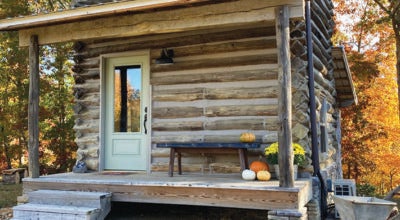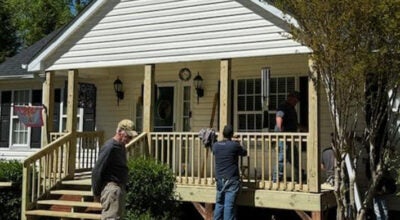The Literary Corner: Renegade Writer’s Guild
Published 9:45 am Thursday, February 22, 2018
“Faceless People”
By Gaye Hoots
The news of another school shooting brings a sense of helplessness, frustration, and sadness. As a parent, grandparent, and great-grandparent, I know the love and devotion it takes to nurture a baby, teach a small child, and attempt to guide an older child. As a nurse and teacher, I am aware of the time and effort put into meeting a child’s physical and emotional needs and of the unconditional love a family has for their child.
I have lost a grandchild to a drug overdose, but I have no idea of the horror and pain these parents experienced. Families send children to school each day expecting them to arrive safely home like clockwork. Having someone injure and kill innocent children is unimaginable, but it happens.
Having young lives destroyed or forever changed under these circumstances, is unthinkable. The reality is that it is becoming more and more common. There are many theories as to why this is happening. I have thirty years of experience working in the mental health field. Most of it was spent working with adolescents and young adults.
The recurring theme was the struggle to fit in and to be accepted by family, friends, and peers. Many felt that they were bullied or ostracized because of physical disabilities, learning disabilities, social awkwardness, lack of funds to dress like their peers, differing cultural or religious backgrounds, and many other reasons.
A desire to be loved, accepted, and to have friends is inherent. We all need this. Many who struggle to make good grades, to make friends or even one friend are vulnerable and depressed. Depression often leads to self- harm or suicide. The sense of crushing rejection sometimes turns to anger. One young man told me, “It torments me all the time. Sometimes I think of shooting into a crowd so that someone else will feel the hurt and pain that I feel every day.”
Attempting to assess whether he might act on this I asked, “Are these people someone you know and are angry at?”
“No, they are faceless people, not someone I know. I don’t have a gun. I don’t have any weapon. I just want the pain to stop,” he replied.
“There are no faceless people. They all feel pain, they bleed, and they die. They are all just like you and me,” I told him.
Rejection is hard for any of us to handle. The loss of a job, being cut from a team, the breakup of a marriage, or being expelled from school. There needs to be a support system in place to work with anyone in these situations to give them hope and options. Exit interviews should be done by a counselor who can assess the mental health status and make immediate referrals if indicated. When someone feels like it is the end of their world, they may end their life or the lives of many others.
Those struggling feel they are always on the outside looking in at others living a happy life. Sometimes a kind word or smile can make a difference. We can help by being inclusive and aware of others around us, their expressions, their body language, their words, and actions. Often a person will stop attempting to fit in and will try to do the opposite, to stand out. They may alter their looks, form bonds with those doing drugs, join a cult or create a gang of others who consider themselves misfits.
These efforts are a subconscious cry for help, and help should be available in schools, workplaces, churches, and communities. Families should be educated to recognize the cries for help and be able to obtain it even when they can’t afford it. Recognition and intervention could save their life, or our life, or the life of a helpless child.
“Moody’s Bull”
By Beth Carter
My grandfather Moody White loved cows. He loved watching them graze in the pastures of his 500 -acre farm located in northern Iredell County. What he loved the most were the baby calves born each spring. After the disappointment of a stillborn birth along with the loss of a favored heifer during a difficult birth Moody decided he needed a new bull to freshen up his herd. He researched and studied up on what qualities he wanted in a new bull. This was way before the internet and cell phones, so he had to make contacts the old-fashioned way. After making numerous long distance calls and correspondence via “snail mail” he located a prized bull living in Pa. He suffered much criticism from other farmers not only for going out of the state but out of the county. Moody was so excited that despite warnings from the family he drove the truck and trailer to retrieve the bull solo.
Moody called my dad when he crossed back into N.C. two days later requesting assistance in unloading the bull after the long haul to his new home. Daddy rounded up me and my sister, Tempe, from the horse barn and asked if we wanted to go with him to meet the new bull. We jumped on the tractor to make the short trip to the stall where the bull would live until he could be examined by the vet prior to introducing him to “the girls” out in the pasture. Tempe and I had prepared the stall with a fresh bed of hay in anticipation of the arrival.
I often wondered if naming my grandfather Moody was the cause of his moody nature or if his mama had some premonition before his birth. Our grandfather never showed much emotion for people, but he sure did love his animals. We knew that showing an interest in his farm was the way to his heart.
We heard his old green pickup coming down the dirt road before it came into view. Moody was never much concerned with the condition of the mile long dirt road that led from the main road to the old barn. The day before, a sudden downpour had come which dropped 2 inches of rain in one hour and much of the drive into the farm was washed out. Daddy had warned Moody of this when he called and reminded him to “take it easy” as he drove the trailer in. The three of us watched and held our breath as the truck crept down the drive. As the truck reached the culvert it took a severe drop, and Moody had to slam on the brakes. We gasped as the force threw the bull down onto its knees. When the trailer reached the intended stall, the bull remained down. My grandfather and dad made multiple attempts to prod the bull into standing but to no avail. They strapped a rope to the tractor to assist but again no success. Daddy drove the tractor home and made an emergency call to the vet. Tempe and I stayed with Moody trying to reassure him the bull would be ok. The vet came, and after the examination, he reported that no bones appeared to be broken and the vitals were normal. He thought that maybe the long trip and sudden fall had shocked the bull’s sensory system.
News traveled fast in our small community and several neighboring farmers arrived to assist. After a couple hours of deliberation, it was decided to lift the bull with the hoist using the tractor and place him into the stall. The operation was a success, and the wait and see period began.
Every day after school, Tempe and I would ride our horses over to the barn to visit the bull. We felt so sorry for him just lying there all alone. We would brush him, spray him to keep the annoying flies away, feed him, pick up the manure, and put down fresh hay. After several days, I think he anticipated our visits. He seemed to perk up a bit when he heard us coming. We became brave enough to sit on his enormous back and sing and talk to him. This ritual continued for several weeks. The vet made frequent visits as well with always the same comment to just wait and see.
The bull never appeared to be in pain and was able to shift its weight from side to side but never made any attempt at standing. Fear crept in as my sister and I knew that no animal would last on the farm if it was not able to function. Money was always an issue with our grandfather, and although he cared for the bull, he had to face reality and consider putting the animal down. It was decided if the bull had not recovered within the next 3 days the vet would be contacted.
The two days prior to the deadline, Tempe and I extended our visiting hours with the bull. We prayed for the bull to get better and gave him pep talks communicating the harsh reality that his time would soon be up. On the third day, Tempe and I rushed to the barn early in the morning before the vet and our grandfather arrived. As we rounded the barn, we saw something strangely different. There at the gate of the stall proudly stood the bull. We were shocked at how tall he was and how threatening in stature he appeared. Before we could even think, we both reacted by jumping up and over the gate right into the stall beside the bull. We hugged him, rubbed him all over his body and up and down his shaky weakened legs. We shouted and hooted and thanked God for the miracle we had prayed for. To our surprise, the bull laid back down as Moody and the vet arrived. We told of how the bull was standing earlier and neither of them believed us, but they decided to wait a few more days. Every day after that, the bull was standing when we came to visit. Our Daddy called Moody each evening to tell him the news, and all he could do was shake his head in unbelief. He told Daddy that he was there all day from 7 am to 4 pm, and the bull never stood. Finally, the bull did stand one day when Moody was present. Following a thorough check-up, the vet declared him healed! He provided Moody with some medicated salve to rub on the bull’s legs twice a day to speed up the process of gaining strength. Tempe and I volunteered for the job once a day right after school, and within two weeks, he was able to be turned out to pasture with the rest of the herd.
That was a very emotional day for me and my sister. We were feeling both elation for his recovery but also sadness knowing we would no longer be needed to nurse the bull. As we watched him enthusiastically join the other cows, Moody placed his arms around each of our shoulders and thanked us for saving his bull. I will never forget that feeling of love and pride we all had for each other.
For years that bull made some strong and healthy calves for my grandfather. We saw him often as we rode our horses all over the farm. At times he would spy us and make his way to the fence close to where we were riding. We would dismount and climb the fence to give him the desired rub, a friendly word, and he would express a thank you to us with his big brown kind eyes and a nudge of his nose.
“A Deep Spring Clean”
By Kevin F. Wishon
It’s that time of year again; except, this time, I’m going to make a difference. I’m utterly amazed at the number of things I have collected over the course of more than twenty years. Of course, I’ve made annual attempts to address the clutter; however, looking around the house, I have failed. Somehow, many things didn’t quite make it out the door. Apparently, sentimentality kicked in, and the item found a different place to dwell in my home. Well, this year that changes.
I have far too many monthly magazines, paper receipts, newspaper articles, college papers, and Internet printouts. I still laugh over the Internet printouts; why did I ever think that information would become unavailable? Then, there are the receipts for stuff I don’t remember buying; what was the “540 box” I purchased on November 22, 1997? I’m sure it was important at some point, but today, it has to go. Then there are the college papers; some of the information on them remains useful, so I must spend hours separating stacks of classroom notes. Additionally, how many recipes for soup, do I need?
I’m holding myself to the one-year rule, or was it the five-year rule? I can’t remember. Anyway, if I haven’t used, or needed it in five years, it has to go. Going forward, if it’s useful or has keepsake value, it must have a place of its own; no more scattered locations throughout the house. Even books I collected over the years are put to the same test. After so many years of living in one place, I ask myself, what is wheat, and what is chaff?
Thus far, I’m making good progress and look forward to finishing. Already, I feel much better and do not miss anything; I should have done this much sooner. However, if you feel the need for more “stuff” in your life, let me know, I think I can help you out.
“The 1850 Census”
By Marie Craig
DATA: The first United States census was taken in 1790 and then every ten years after that. The first six census records only listed the head of the household by name and the other family members by age category. But starting in 1850, each member of the household was listed by name since then. The population of the United States in 1850 was about twenty-three million. The 1850 Population Schedule for Davie County showed 5,613 free white persons. There were 82 free blacks and 2,170 slaves.
NARRATIVE: Burgess Gaither, age 31, married to Sarah, with daughter, Mary, 4 and son, William, 1, used his horse to transport himself throughout the entire county to count people and statistics in 1850. He arose early on Saturday, June 1, 1850, to begin his long and tedious trip. He carried five huge, blank books with him. The directions for taking these five census schedules had been read several times, so he felt at ease in interviewing people. The first family he visited was John and Lydia Van Eaton. In book one, he carefully wrote down their names and the names of their children in order of birth. He also listed their ages, gender, occupation, value of real estate, place of birth, whether married within the year, whether attended school within the year, whether adults could read and write, and whether any of them was deaf and dumb, blind, insane, idiotic, a pauper or a convict.
Then in book two, he listed the slave owner’s name, and the slave’s age, gender, and whether black or mulatto, but not the slaves’ names. John Van Eaton had four, but they were all children.
Book three was filled in next. Burgess asked, “Has anyone in your family or one of your slaves died since June 1, 1849?” If so, the person’s name, age, gender, color, marriage, place of birth, month of death, occupation, cause of death, days ill, and doctor’s name. A dictionary is necessary sometimes to understand what archaic terms such as phthisic, dropsy, consumption, etc. mean.
Next, he opened book four and asked 46 questions to each household about their farm. He filled in the page with number of acres, value, number of horses, pigs, goats, pounds of butter, etc.
In book five, he listed any industries, such as sawmills, grain mills, distilleries, blacksmith shop, or tanneries. There were few of these since most were farmers. One company made vehicles for horses to pull. The inventory was 1 coach ($400), 12 rockaways ($200 each), 57 buggies ($100 each), and 3 wagons ($60 each). Eaton and Rich had a tobacco factory with 20,000 pounds of tobacco worth $2,000.
On August 16, 1850, Burgess finished his 2.5-month responsibility of getting a snapshot of statistics for the federal government. Genealogists and historians assume he did this just for them so that they could learn more about their kinfolk and the county, but it was actually done for the government’s use of learning more about citizens.
Time was, that a researcher had to look all the way through this hand-written data to discover the names and ages of his relatives, but computers have saved them much time by having indexes on Ancestry and FamilySearch Websites.
We live in an age of saving time and effort, but we need to remember the dedicated work of the men and women who have taken the census since 1790. A parting blessing that I heard once is “May you live long enough to find yourself on a census.” The 1940 census is the most current one for public viewing. There is a waiting period of 72 years from the time the census is taken until it is made public.





